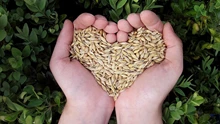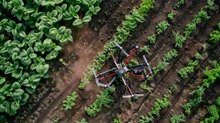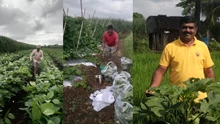
Drought have stalked the parched fields of Bala Murghab, a rural Afghan district where climate change is proving a more deadly opponent than the country's recent conflicts.
A longer-term crisis was brewing as the world watched the Taliban launch a startling attack that resulted in the swift fall of the country's western-backed government.
Herders have been forced to sell their livestock, farmers have been forced to quit their communities, and parents have been forced to sell their daughters into marriage at ever younger ages in desperate attempts to feed their families. "The last time I saw rain was last year, and it wasn't much," says Mullah Fateh, the head of Bala Murghab's Haji Rashid Khan village. In this corner of Badghis province, where 90 percent of the 600,000-strong population survives off livestock or fields, communities cling to life in tiny clusters of mud-brick homes among an endless ocean of undulating brown hills.
"We sold sheep to buy food, and others perished of thirst," Fateh says. He had 300 sheep when the first of two recent droughts occurred in 2018, but now he just has 20 as the newest dry weather hits. More than 22 million Afghans would experience "acute food insecurity," according to UN agencies. This winter, the UN has issued a warning that the nation is facing one of the world's worst humanitarian disasters.
Aid-dependent According to a research conducted by the environmental organization ‘Germanwatch’, Afghanistan has been impacted the sixth hardest blow by climate change, which is caused by greenhouse gas emissions such as CO2. According to World Bank data, an Afghan lifestyle emits 0.2 tons of CO2 per year, compared to 15 for the average American. One of the most catastrophic results, as expected, has been a decrease in rainfall in northern Afghanistan.
"The crops are destroyed, and the animals have nothing." Six individuals have died of starvation in the last two years," the elder guy, Haji Jamal, claimed. "The jerry cans we've been using to collect water have worn out, and we can't afford to replace them." According to neighbour Lal Bibi, when desperation develops, women and children are alone and in danger."
Although few locals are aware of climate change, a UN report warns that yearly droughts in several Afghan districts would "likely become the norm" by 2030.
Foreign govt. have yet to acknowledge the Taliban, and the country's financial reserves, which are primarily held in the United States, have been stopped, as does the flow of aid. Regional Taliban government leaders stated that there is little they can do.
"The Emirate does not have a lot of money. Our objectives are linked with the international community," revealed Abdul Hakim Haghyar of the Badghis Province Refugee Office. Some international NGOs continue to operate, and foreign countries have pledged humanitarian relief if it can be delivered to the people but Taliban remain sanctioned.












